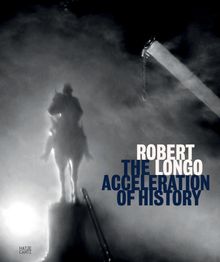| |||||||||||||||||||||||||
ARTIST MONOGRAPHS
|
|
STATUS: Out of stock Temporarily out of stock pending additional inventory. |
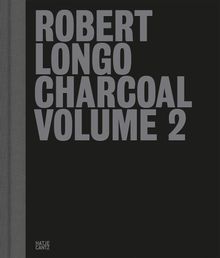 Robert Longo: Charcoal, Volume 2
Robert Longo: Charcoal, Volume 2
Published by Hatje Cantz.
Text by Tim Griffin, Haley Mellin.
A sequel to the 2011 publication, Charcoal Volume 2 presents the charcoal drawings of American artist Robert Longo (born 1953) from 2012 to the present. This large-format, elaborately designed catalog—printed on natural paper using a tritone process and bound in half linen—is a continuation of the first volume. It includes his recent series from the past 10 years such as Death from Above (2012–16), Hungry Ghosts (2015–17) and the Destroyer Cycle (2016–20). Together, they form a comprehensive compendium of this central oeuvre by the legendary New York artist, who was a key figure in founding the Pictures Generation in the 1980s and also directed some of the most iconic music videos of the decade. In this new catalog, essays by Tim Griffin and Haley Mellin address the existential questions of our time that are at the heart of these new, large-scale, hyperrealistic drawings: war, violence, capitalism, the rising division of American society and the possibilities of political protest and individual freedom in the face of the overwhelming power of the media.
PUBLISHER
Hatje Cantz
BOOK FORMAT
Hardcover, 9.75 x 11.75 in. / 316 pgs / 10 color / 150 bw.
PUBLISHING STATUS
Pub Date 9/17/2024
Active
DISTRIBUTION
D.A.P. Exclusive
Catalog: SPRING 2024 p. 91
PRODUCT DETAILS
ISBN 9783775756617 TRADE
List Price: $125.00 CAD $180.00
AVAILABILITY
In stock
in stock $125.00 Free Shipping UPS GROUND IN THE CONTINENTAL U.S. |
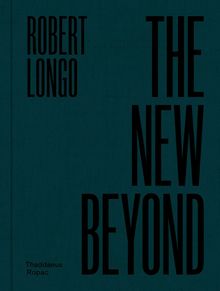 Robert Longo: The New Beyond
Robert Longo: The New Beyond
Published by Thaddaeus Ropac.
Edited by Oona Doyle, Lian Giloth, Hella Pohl. Foreword by Qing Liu. Text by Michel Tapié, Dominique de Font-Réaulx.
Robert Longo's (born 1953) newest series of monumental charcoal drawings pay homage to the European pioneers of postwar art. Following his 2014 series of drawings based on American Abstract Expressionism, in this volume and its accompanying exhibition Longo explores the work of Karel Appel, Jean Dubuffet, Arshile Gorky, Asger Jorn, Yves Klein, Willem de Kooning, Maria Lassnig, Piero Manzoni, Joan Mitchell, Pierre Soulages, Wols and Zao Wou-Ki. By revisiting their work in a contemporary context, Longo offers this new body of work as a "historical construction," highlighting the continued influence of these artists and finding a present-day resonance in their ability to transcend through their work the fraught circumstances of a radically changing world. The book features color reproductions, close-up details and essays.
PUBLISHER
Thaddaeus Ropac
BOOK FORMAT
Hardcover, 8.25 x 11 in. / 168 pgs / 22 color / 35 bw.
PUBLISHING STATUS
Pub Date 9/5/2023
Active
DISTRIBUTION
D.A.P. Exclusive
Catalog: FALL 2023 p. 103
PRODUCT DETAILS
ISBN 9782910055912 TRADE
List Price: $45.00 CAD $65.00
AVAILABILITY
In stock
in stock $45.00 Free Shipping UPS GROUND IN THE CONTINENTAL U.S. |
 Robert Longo
Robert Longo
Published by Hatje Cantz.
Text by Andrew Durbin.
PUBLISHER
Hatje Cantz
BOOK FORMAT
Paperback, 7.5 x 10.5 in. / 320 pgs / 300 color.
PUBLISHING STATUS
Pub Date 7/25/2017
Out of stock indefinitely
DISTRIBUTION
D.A.P. Exclusive
Catalog: SPRING 2016 p. 136
PRODUCT DETAILS
ISBN 9783775741071 TRADE
List Price: $55.00 CAD $72.50
AVAILABILITY
Not available
STATUS: Out of stock indefinitely. |
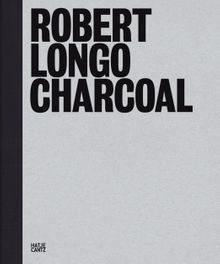 Robert Longo: Charcoal
Robert Longo: Charcoal
Published by Hatje Cantz.
Text by Hal Foster, Kate Fowle, Thomas Kellein.
His large-format works contrast the innocence of sleeping toddlers, the tranquil grandiosity of Earth and the planets, roses in bloom and Gothic cathedrals with threatening images of atom bomb explosions, fighter pilots, monster waves, sharks and the muzzles of revolvers. Inexorably and precisely, Longo records the state of our world; his powerful motifs give form and expression to the feelings of fear and longing felt by people in the 21st century, and affect the viewer with the full force of the medium.
Back in print, this large-format, elaborately designed book—printed on natural paper using a tritone process, bound in half-cloth and distributed in four different cover designs—has been created in close collaboration with the artist and affords a comprehensive overview of his charcoal drawings from the past decade.
PUBLISHER
Hatje Cantz
BOOK FORMAT
Clth, 10 x 12 in. / 252 pgs / 157 color.
PUBLISHING STATUS
Pub Date 6/27/2017
Out of stock indefinitely
DISTRIBUTION
D.A.P. Exclusive
Catalog: FALL 2017 p. 122
PRODUCT DETAILS
ISBN 9783775743235 TRADE
List Price: $65.00 CAD $90.00
AVAILABILITY
Not available
STATUS: Out of stock indefinitely. |
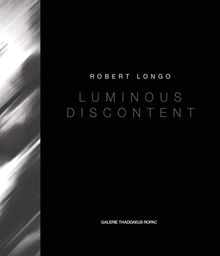 Robert Longo: Luminous Discontent
Robert Longo: Luminous Discontent
Published by Galerie Thaddaeus Ropac.
Edited by Alessandra Bellavita, Qing Liu. Text by Olivia Murphy.
PUBLISHER
Galerie Thaddaeus Ropac
BOOK FORMAT
Hardcover, 9.5 x 11 in. / 80 pgs / 5 color / 34 duotone.
PUBLISHING STATUS
Pub Date 8/23/2016
Out of stock indefinitely
DISTRIBUTION
D.A.P. Exclusive
Catalog: FALL 2016 p. 157
PRODUCT DETAILS
ISBN 9782910055714 FLAT40
List Price: $35.00 CAD $47.50
AVAILABILITY
Not available
STATUS: Out of stock indefinitely. |
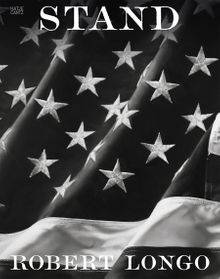 Robert Longo: Stand
Robert Longo: Stand
Published by Hatje Cantz.
Text by Isabelle Graw, Robert Longo.
PUBLISHER
Hatje Cantz
BOOK FORMAT
Hardcover, 9.5 x 11.75 in. / 108 pgs / 101 color.
PUBLISHING STATUS
Pub Date 9/30/2014
Out of stock indefinitely
DISTRIBUTION
D.A.P. Exclusive
Catalog: FALL 2014 p. 132
PRODUCT DETAILS
ISBN 9783775738149 TRADE
List Price: $55.00 CAD $72.50
AVAILABILITY
Not available
STATUS: Out of stock indefinitely. |
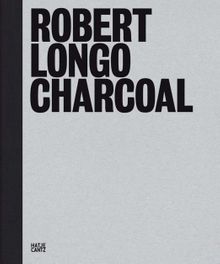 Robert Longo: Charcoal
Robert Longo: Charcoal
Published by Hatje Cantz.
Text by Hal Foster.
Robert Longo was born in Brooklyn in 1953 and received a BFA in sculpture from Buffalo State College in 1975. In the late 1970s and early 1980s, Longo collaborated with musicians loosely associated with New York's No Wave movement, such as Glenn Branca, Rhys Chatham and Jonathan Kane, and formed the band Robert Longo's Menthol Wars. In the 1980s, as his Men in the City drawing series was winning him critical acclaim, Longo also directed several music videos, including New Order's “Bizarre Love Triangle” and R.E.M.'s “The One I Love.” In 1995 he directed the cyberpunk film Johnny Mnemonic, starring Keanu Reeves, Dolph Lundgren and “Beat” Takeshi.
PUBLISHER
Hatje Cantz
BOOK FORMAT
Clth, 10.5 x 12.25 in. / 256 pgs / 140 tritone.
PUBLISHING STATUS
Pub Date 8/31/2012
Out of print
DISTRIBUTION
D.A.P. Exclusive
Catalog: FALL 2011 p. 60
PRODUCT DETAILS
ISBN 9783775731966 TRADE
List Price: $120.00 CAD $145.00
AVAILABILITY
Not available
STATUS: Out of print | 00/00/00 For assistance locating a copy, please see our list of recommended out of print specialists |
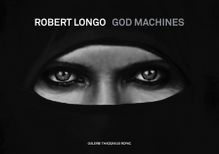 Robert Longo: God Machines
Robert Longo: God Machines
Published by Galerie Thaddaeus Ropac.
Edited by Alessandra Bellavita, Jill Silverman van Coenegrachts. Text by Jonathan T.D. Neil.
PUBLISHER
Galerie Thaddaeus Ropac
BOOK FORMAT
Hardcover, 9.5 x 12.25 in. / 64 pgs / illustrated throughout.
PUBLISHING STATUS
Pub Date 1/31/2012
Out of print
DISTRIBUTION
D.A.P. Exclusive
Catalog: FALL 2011 p. 131
PRODUCT DETAILS
ISBN 9782910055455 TRADE
List Price: $40.00 CAD $54.00
AVAILABILITY
Not available
STATUS: Out of print | 00/00/00 For assistance locating a copy, please see our list of recommended out of print specialists |
 Robert Longo: The Freud Drawings
Robert Longo: The Freud Drawings
Published by Kerber.
Edited by Klaus Albrecht Schroder and Martin Hentschel. Essays by Werner Spiess and Rainer Metzger.
PUBLISHER
Kerber
BOOK FORMAT
Hardcover, 9.5 x 12 in. / 122 pgs / 58 color.
PUBLISHING STATUS
Pub Date 7/2/2003
Out of print
DISTRIBUTION
D.A.P. Exclusive
Catalog: FALL 2003 p. 60
PRODUCT DETAILS
ISBN 9783933040992 TRADE
List Price: $55.00 CAD $72.50
AVAILABILITY
Not available
STATUS: Out of print | 00/00/00 For assistance locating a copy, please see our list of recommended out of print specialists |
